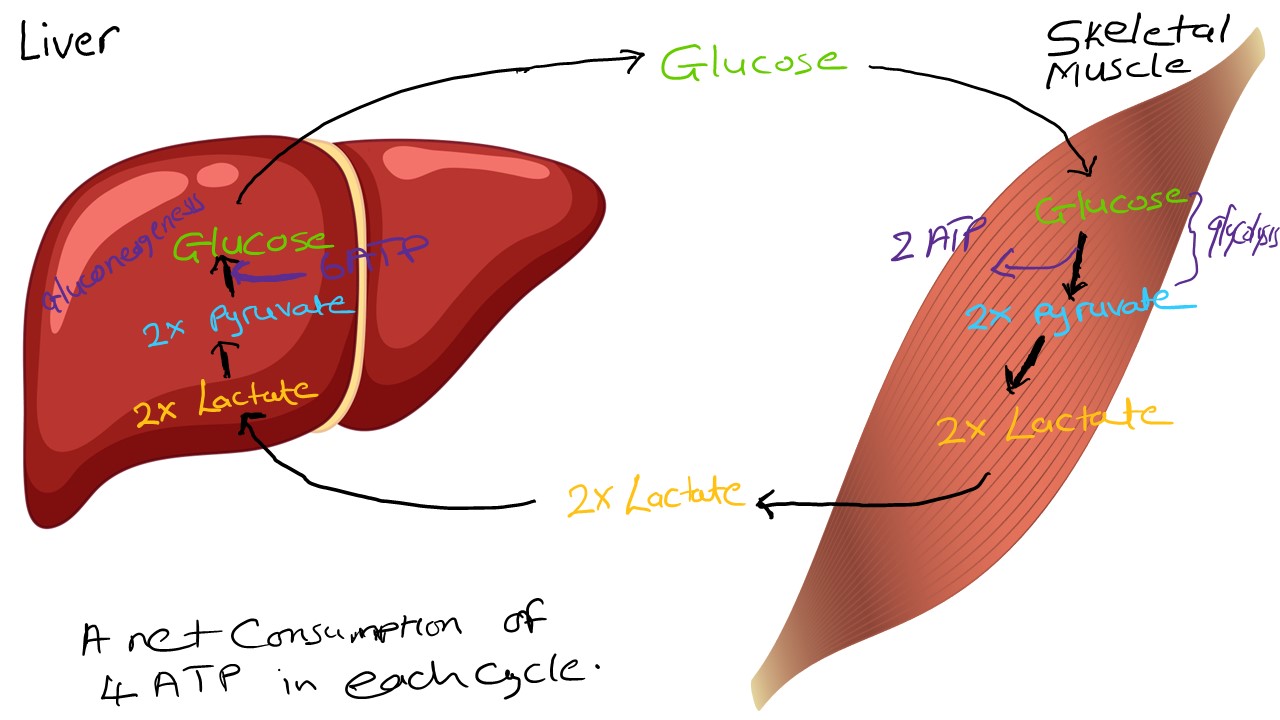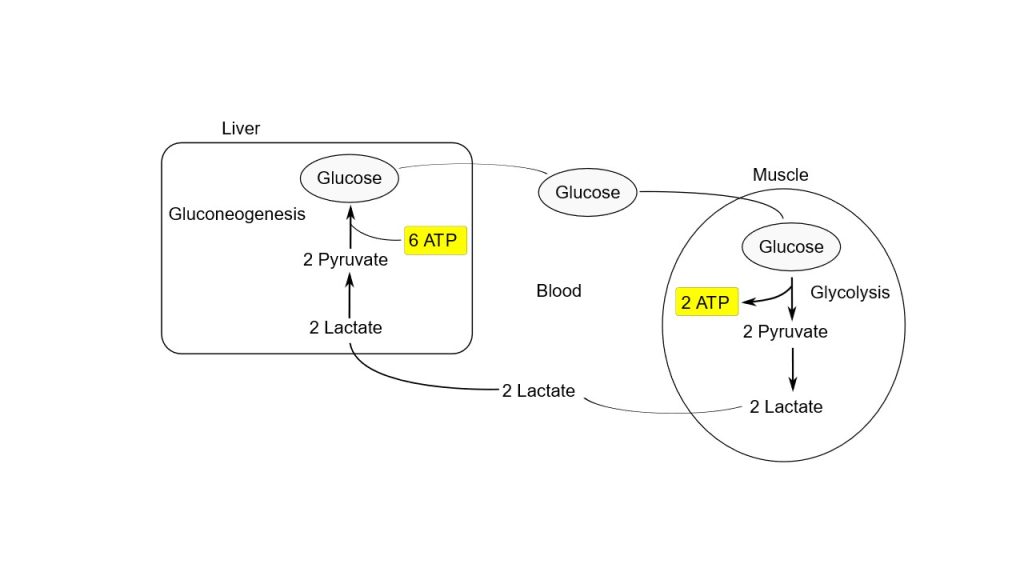Cori Cycle Made Easy

The Cori Cycle
The Cori Cycle, also known as the lactic acid cycle, is an essential metabolic pathway that plays a crucial role in maintaining glucose homeostasis and energy balance in the body. It serves as a dynamic metabolic pathway that helps balance energy needs during periods of intense physical activity, preventing the accumulation of lactic acid in muscles and contributing to the maintenance of blood glucose levels for various tissues, including the brain.
The Cori Cycle involves several biochemical steps:
Lactate Production: In active muscle cells, especially during intense exercise, there is increased glycolysis (breakdown of glucose) to produce energy. As oxygen availability becomes limited, pyruvate generated from glycolysis is converted to lactate as a temporary solution for energy production.
Lactate Transport: Lactate is then transported from the muscle cells into the bloodstream, reaching the liver through circulation.
Gluconeogenesis: In the liver, lactate undergoes gluconeogenesis, a process where non-carbohydrate precursors (in this case, lactate) are used to synthesize glucose. Enzymes such as lactate dehydrogenase are involved in converting lactate to pyruvate and then to glucose.
Glucose Release: The newly synthesized glucose is released into the bloodstream to be transported to other tissues, including the muscle cells that initially produced the lactate.
Energy Utilization: The glucose taken up by muscle cells can be used as an energy source, completing the cycle. This process helps replenish energy reserves in muscles and ensures a continuous supply of glucose for energy production, even under conditions of increased lactate production.

Here are some key points highlighting the importance of the Cori Cycle:
- Glucose Homeostasis: The cycle involves the conversion of lactate produced by anaerobic glycolysis in muscles to glucose in the liver, which is then transported back to the muscles for energy production. This process is vital during periods of intense physical activity when muscles generate lactate as a byproduct of glycolysis.
- Energy Production: During anaerobic condition or strenuous exercise, muscle cells produce lactate from pyruvate as a rapid means of generating ATP. The lactate produced can be transported to the liver, where it undergoes gluconeogenesis to be converted back into glucose. This glucose can then be released into the bloodstream for use by other tissues, including the muscles.
- Prevention of Lactic Acid Accumulation: The Cori Cycle helps prevent excessive accumulation of lactic acid in muscles, which could lead to a decrease in pH and result in muscle fatigue. By transporting lactate to the liver and converting it back to glucose, the cycle prevents the buildup of lactate in muscle tissue.
- Fuel for the Brain: The glucose produced by the Cori Cycle in the liver is not only released into the bloodstream for peripheral tissues but is also a crucial energy source for the brain, which relies heavily on glucose.
- Conservation of Carbon Skeletons: The Cori Cycle allows for the conservation of carbon skeletons from lactate, ensuring that the carbon atoms are not lost as waste but are instead recycled to form glucose.
- Adaptation to Metabolic Demands: The ability of the Cori Cycle to convert lactate to glucose provides flexibility to the body’s metabolism, allowing it to adapt to varying energy demands and oxygen availability.